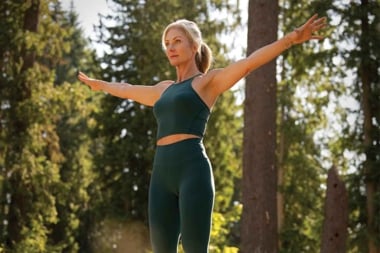beauty
What's in Your Makeup Bag?Beauty is a booming business in North America, with its success basedentirely on our constant dissatisfaction with the way we loo.
What's in Your Makeup Bag?
Beauty is a booming business in North America, with its success based
entirely on our constant dissatisfaction with the way we look. To tap into
our desire to look more beautiful, younger and sexier, advertisements and
cosmetics counters lure us with seductively packaged, colourful palettes of
purples, corals, reds and pinks. But what's really in this stuff?
Beauty products are loaded with irritants, carcinogens and hormone
disruptors, says Kim Erickson, author of Drop-Dead Gorgeous (McGraw-Hill
Ryerson, 2002). Every day, consumers expose themselves to about 200
chemicals in beauty and personal care products. These ingredients may be
hiding in your cosmetics.
Ingredient Use
Comments and Cautions
aluminum powder Approved for externally applied cosmetics,
including those in the eye area; often Aluminum
is potentially linked to the development of Alzheimer's disease.
contained in face powders. Created from finely divided
particles of aluminum.
bismuth oxychloride Approved for general cosmetic use; often
contained in eyeshadow. Often
called synthetic pearl; may cause allergic reactions.
dihydroxyacetone Approved for externally applied cosmetics intended
solely or in part to give colour to the human body. Obtained by the
action of bacteria on glycerol; lethal to rats when injected in large doses;
can cause contact dermatitis.
manganese violet Approved for general cosmetic use; often
contained in eye shadow. Toxic
when inhaled.
mica Approved for general cosmetic use; adds a
pearly lustre and "slip" to face powder. Derived
from the muscovite mica; a respiratory irritant when inhaled.
Drop Dead Gorgeous (McGraw-Hill Ryerson, 2002)
Papaya Skin Care Remedies
Papaya isn't just for eating-it's also beneficial for natural skin care and
repair. One of the most nutritious fruits in the world, it's full of
enzymes, minerals and vitamins-with more vitamin A than carrots and more C
than oranges! You can use papaya to treat or eliminate old dead skin cells,
dandruff and other skin disorders, and even to reduce the signs of premature
aging.
Acne - Apply a mask using the fleshy side of a green papaya skin. Eating
papaya supports the treatment internally by improving digestive health.
Dandruff - Shampoo hair with diluted papaya vinegar mixed with lemon juice
and leave on for 20 minutes, then rinse. Papaya hair shampoos are also
available at health food stores.
Rough skin - Native Americans rub rough skin with the fleshy side of the
skin from a ripe papaya.
Sun spots - Apply the fleshy side of the skin from a green papaya to the
spots. Papaya vinegar can also be applied.
Wrinkles - Old skin cells make wrinkles deeper. Use a papaya powder face
mask to reduce old dead skin cells and make the skin smoother. Apply the
fleshy side of the skin from a green papaya.
Caution: In rare cases and with long-term application, highly concentrated
papaya could cause sensitivity and skin irritation.
alive Natural Health Guide #14, Papaya: The Healing Fruit, by Harald W.
Tietze, available from your local health food store or from alive Books:
1-800-663-6519.




